Plenty of midcentury homes hold a place in L.A.’s design history, but few are as deeply studied — or as beautifully revived — as the Lechner House.
Designed in 1949 by R.M. Schindler, one of the defining voices of Los Angeles modernism, the home is a rare example of a fully restored midcentury landmark that still feels completely alive. Privately tucked behind gates and surrounded by greenery, the 4,000-square-foot residence offers that unmistakable Schindler mix of geometry, glass, and total immersion in the landscape.
The home, designated Los Angeles Historic-Cultural Monument #1024 years ago, has recently been brought to market after years of updates — and it’s now asking $6,500,000.
Over the past decade, the property has undergone a rigorous, almost scholarly restoration led first by Pamela Shamshiri of Studio Shamshiri and later continued by architecture firm Escher GuneWardena, with landscape work by Terremoto. The result is a house that feels as close as possible to Schindler’s original vision — right down to the revived pool.
An expansive Schindler classic

While many of the architect’s homes skew compact, this one is unusually expansive.
The Lechner House stretches across two levels with four bedrooms and four bathrooms, giving it a presence — and a sense of openness — not always found in Schindler’s residential work. And with the Mills Act in effect, it comes with a significant property-tax advantage attached to its historic status.
“Fully restored to its intended purpose, The Lechner House embodies pedigree, peace, and proportion — a living piece of Los Angeles architectural history. Every surface tells a story of craftsmanship and care; every view draws you back to nature,” says listing agent George Penner with Compass.
Property snapshot
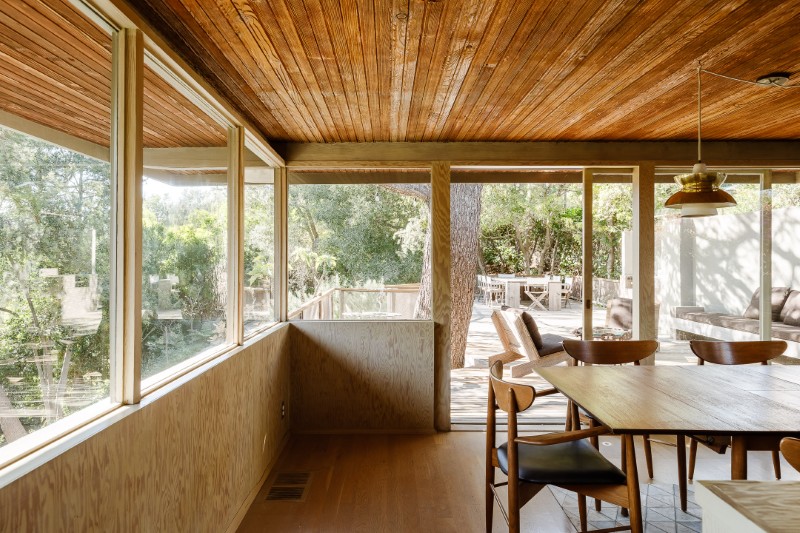
- Price: $6,500,000
- Расположение: 11600 Amanda Drive, Studio City, CA 91604
- Кровати: 4
- Ванны: 4
- Size: 4,002 sq. ft.
- Listed with: Stefanie Stolper, Sotheby’s International Realty & George Penner, Compass
A Los Angeles landmark
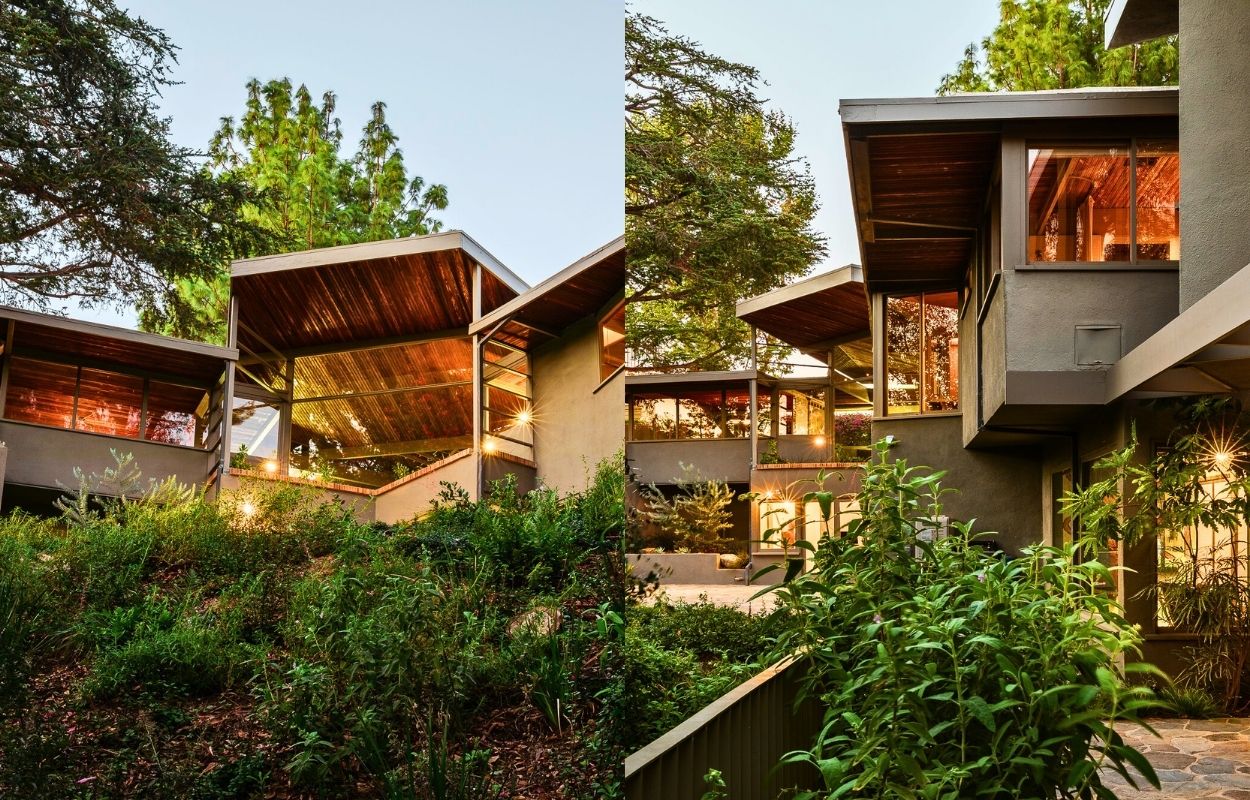
The Lechner House is widely regarded as one of Schindler’s standout postwar projects — a period when his experiments in spatial rhythm and indoor-outdoor flow were reaching their peak.
Built in 1949, it channels many of the architect’s core ideas: interlocking volumes, organic materials, and carefully calibrated sightlines that guide the eye outward toward the landscape. Its status as Historic-Cultural Monument #1024 underscores how significant it remains in L.A.’s architectural canon.
Over 4,000 sqft of inviting, warm living space
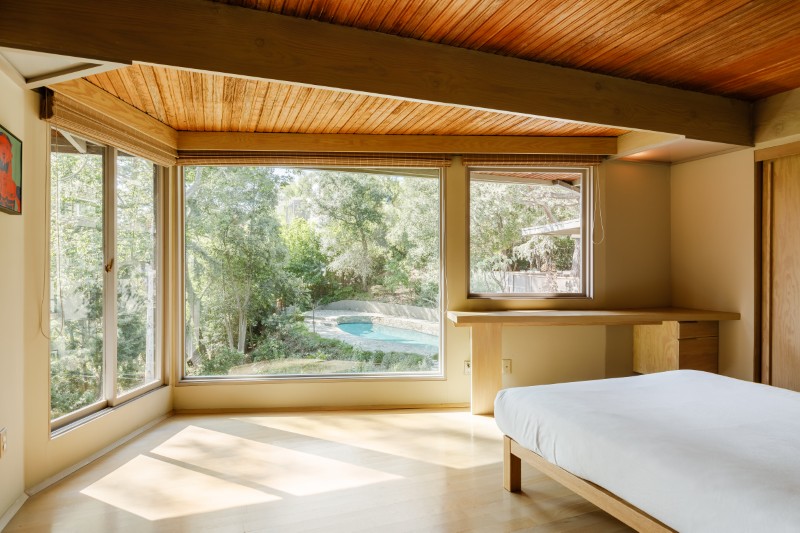
Spanning roughly 4,000 square feet across two stories, the residence feels unusually open and generous for the architect — yet it still maintains the fine-grained detailing and human-scaled proportions that defined his style.
The mix of warm wood, textured surfaces, and long horizontal lines gives the house an architectural quietness, even at this size.
A restoration led by Pamela Shamshiri

The home’s revival began with Pamela Shamshiri of Studio Shamshiri, whose multi-year effort focused on returning the interiors to their original intent.
Materials were studied, surfaces were repaired rather than replaced, and modern elements were introduced only where they supported functionality without disturbing the period character. It’s the kind of restoration that doesn’t just preserve history — it reactivates it.
An exterior brought back by Escher GuneWardena
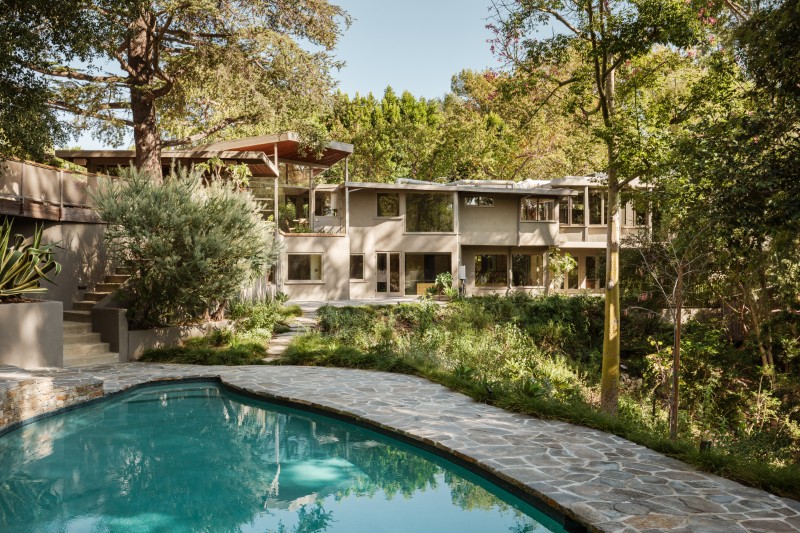
The current owners extended the restoration to the exterior, bringing in renowned firm Escher GuneWardena — known for its sensitive work on midcentury landmarks.
They completed a full exterior renovation, including structural and envelope improvements, and reintroduced details that had disappeared over decades. Their work culminated in the revival of the home’s original pool, returning one of Schindler’s key site features to its intended form.
Landscape revived by Terremoto
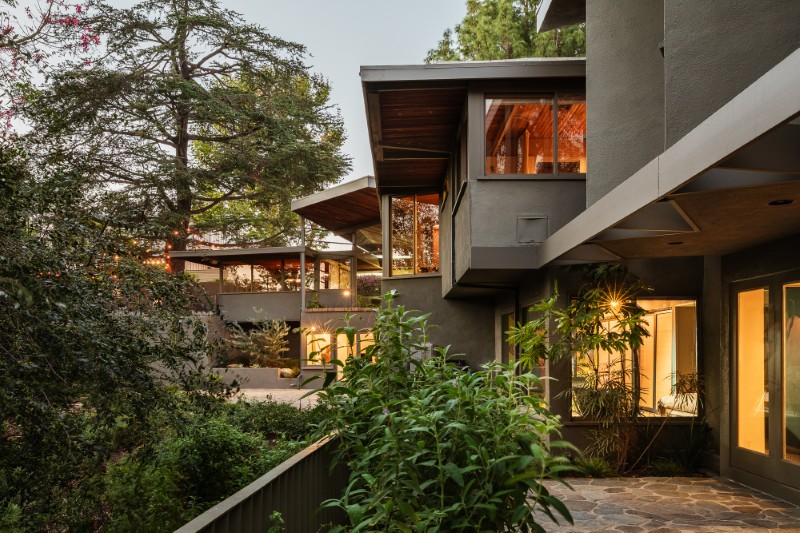
Terremoto’s landscape design returns the setting to the immersive, nature-driven environment Schindler imagined.
The grounds feel relaxed and organic, with plantings that soften the home’s angular forms and create a layered sense of privacy. The result is a park-like atmosphere that frames the architecture rather than competing with it.
A design connected to nature

Schindler often drew inspiration from unconventional sources, and here he looked to Native American cave dwellings.
The home’s walls of glass create a continuous dialogue between indoors and out, allowing light to shift throughout the day and drawing nature into every room. The effect is both calming and cinematic — one of the reasons the house continues to be such an influential part of L.A.’s architectural story.
As a designated historic property, the home benefits from the Mills Act, which can significantly reduce property taxes for owners committed to preservation. For landmark architecture like this, it’s a rare incentive that makes stewardship more feasible over the long term.
The Lechner House: an architectural gem looking for its next steward
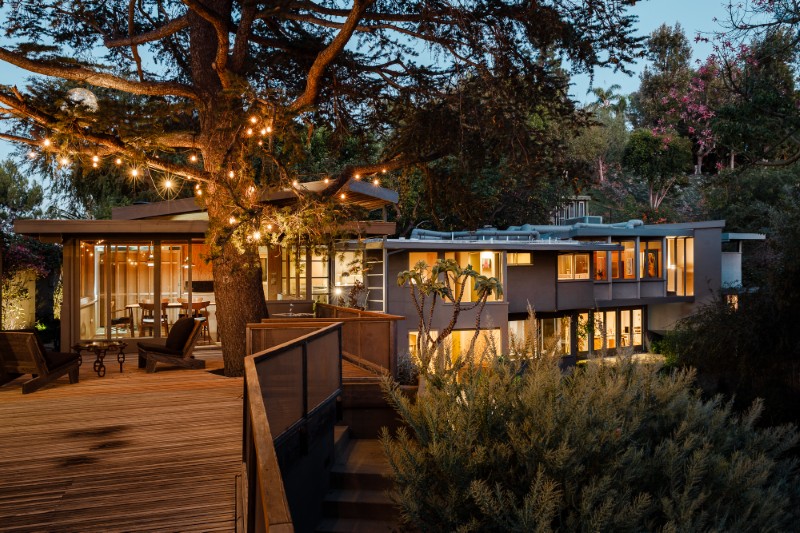
Nearly eight decades after it was built, the Lechner House still feels radically modern.
Its proportions, materials, and connection to nature speak to Schindler’s belief that architecture should shape how people experience space — not just how a home looks on the surface.
With its meticulous restoration and renewed landscape, the property stands today as both a living artifact and an example of how thoughtful preservation keeps L.A.’s architectural legacy moving forward. We can only hope the home’s buyers will maintain its legacy.
Больше историй
Совершите путешествие во времени в этом сокровище Старой Пасадены, построенном в 1927 году.
Пост Inside the Lechner House, a brilliantly restored piece of L.A. design history впервые появился на Дома с модными брюками.